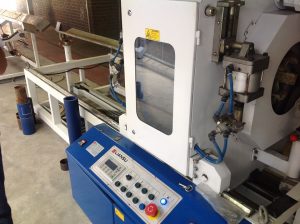
Have you heard of plastic extrusion? Like other extrusion processes, it involves forcing liquefied material through a die. As the material goes through the die, it takes the die’s shape. Plastic extrusion uses this same principle to create three-dimensional objects in complex shapes and sizes. It’s unique, however, because it involves the use of plastic, rather than metal, materials.
The Basics of Plastic Extrusion
Plastic extrusion is an extrusion process used by manufacturers to produce plastic products or components (see below). It’s performed by feeding raw plastic — typically in the form of plastic pellets or powder — into a hopper where the raw plastic is then forced into the extrusion machine. The extrusion machine then heats the raw plastic via friction. As the raw plastic is heated, it turns to liquid while also becoming pressurized in the process.
At the end of the extrusion machine is a die, which is responsible for reshaping the raw plastic. Extrusion dies are typically circular-shaped pieces of metal with a unique shape cut into the center. When raw plastic is forced through a die, it takes the die’s shape. Therefore, manufacturing companies can create plastic products and components in a variety of shapes and sizes using an extrusion machine.
If you look at a typical extrusion machine, you’ll notice it features a large hollow screw. These screws usually have three separate sections: the feed zone, melting zone and metering zone. The feed zone is designed to feed the raw plastic. The melting zone is designed to partially melt the raw plastic. And the metering zone is designed to finish melting the raw plastic.
Some of the most common products produced using plastic extrusion include the following:
- Weatherstripping
- Handrails
- Window films
- Insulation for wiring
- Plumbing fixtures
- Disposable cups
- Electrical connectors
Plastic Extrusion vs Plastic Injection Molding: What’s the Difference?
Plastic injection molding is similar to plastic extrusion. Both processes involve forcing heated, liquefied plastic through a die. The difference between them, however, is that plastic extrusion is a continuous process, whereas plastic injection molding is not continuous.
With plastic injection molding, liquefied plastic is forced into a die. The die is filled with raw plastic, after which it’s allowed to cool and harden. Once the raw plastic has hardened, it’s separated and removed from inside the die.
With plastic extrusion, liquefied plastic is forced through a die rather than into a die. This allows manufacturing companies to produce a large volume of plastic products without interruption. Since the extrusion machine continues to force raw plastic through the die, it will continue to produce products or components in the die’s shape.
